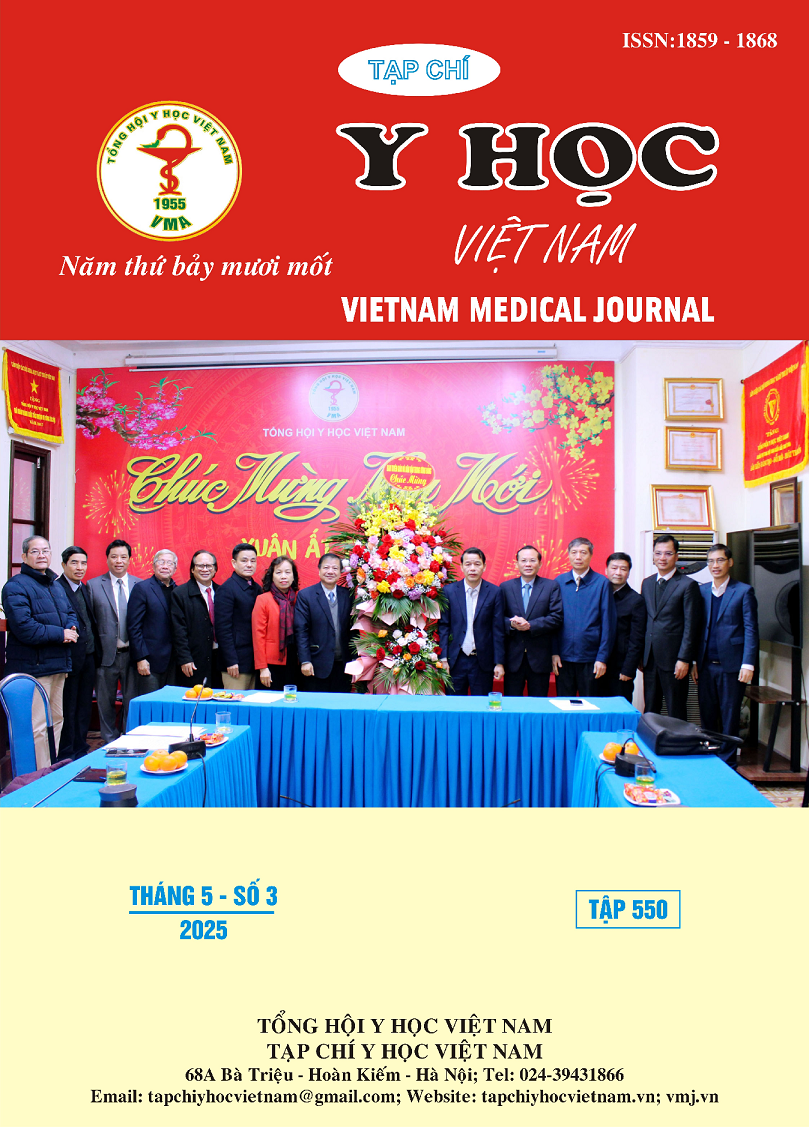BIẾN CHỨNG VIÊM PHÚC MẠC SAU MỞ THÔNG DẠ DÀY QUA DA (PEG) NHÂN MỘT CA LÂM SÀNG VÀ NHÌN LẠI Y VĂN
Nội dung chính của bài viết
Tóm tắt
Mở thông dạ dày qua nội soi - Percutaneous endoscopic gastrostomy (PEG) là một thủ thuật phổ biến để cung cấp dinh dưỡng qua đường tiêu hóa cho bệnh nhân rối loạn nuốt. Mặc dù thường an toàn, PEG có thể gây ra các biến chứng, bao gồm viêm phúc mạc. Chúng tôi trình bày một ca lâm sàng viêm phúc mạc sau đặt PEG nhằm nhấn mạnh tầm quan trọng của việc nhận biết sớm và xử trí kịp thời. Ca lâm sàng: Bệnh nhân nữ 72 tuổi có tiền sử viêm phổi, parkinson và di chứng đột quỵ với rối loạn nuốt được đặt ống PEG để nuôi dưỡng. Sau mở thông dạ dày qua da 4 ngày, bệnh nhân xuất hiện bụng chướng, sốt, chân mở thông sưng nề chảy dịch mủ. Xét nghiệm cho thấy bạch cầu tăng cao và các chỉ số viêm tăng. Chụp cắt lớp vi tính ổ bụng phát hiện có hơi tự do trong ổ bụng, nghi ngờ viêm phúc mạc. Bệnh nhân được điều trị bằng kháng sinh phổ rộng và phẫu thuật cấp cứu. Trong phẫu thuật, phát hiện rò rỉ dịch dạ dày vào ổ bụng. Bệnh nhân được lau rửa ổ bụng và khâu lại vị trí rò, sau đó hồi phục tốt. Bàn luận: Viêm phúc mạc sau PEG là một biến chứng hiếm gặp nhưng nguy hiểm, thường do lệch ống thông sớm, đặt sai vị trí hoặc rò rỉ dịch dạ dày. Các yếu tố nguy cơ bao gồm tuổi cao, suy dinh dưỡng và bệnh lý nền. Chẩn đoán sớm dựa trên lâm sàng và hình ảnh học là rất quan trọng. Điều trị có thể bao gồm kháng sinh đơn thuần trong một số trường hợp, nhưng phẫu thuật cần thiết nếu có tình trạng viêm phúc mạc nặng. Kết luận: Trường hợp này nhấn mạnh sự cần thiết của việc theo dõi chặt chẽ sau PEG, nhận diện sớm biến chứng và phối hợp đa chuyên khoa để tối ưu hóa điều trị. Bác sĩ lâm sàng cần cảnh giác với viêm phúc mạc khi bệnh nhân có triệu chứng đau bụng cấp sau đặt PEG.
Chi tiết bài viết
Từ khóa
mở thông dạ dày nội soi, viêm phúc mạc, biến chứng, nuôi dưỡng đường tiêu hóa
Tài liệu tham khảo
2. Wei M, Ho E, Hegde P. An overview of percutaneous endoscopic gastrostomy tube placement in the intensive care unit. J Thorac Dis. Aug 2021;13(8):5277-5296. doi:10.21037/jtd-19-3728
3. Casas Deza D, Monzon Baez RM, Lamuela Calvo LJ, et al. Complications and survival following percutaneous endoscopic gastrostomy tube placement. Rev Esp Enferm Dig. Oct 2024;116(10): 526-531. doi:10.17235/reed.2024. 10335/2024
4. Tae CH, Lee JY, Joo MK, et al. Clinical practice guidelines for percutaneous endoscopic gastrostomy. Clin Endosc. Jul 2023;56(4):391-408. doi:10.5946/ce.2023.062
5. Vũ Hồng Anh, Đỗ Nguyệt Ánh, Vũ Đức Định. Đánh giá kết quả mở thông dạ dày ra da bằng nội soi (PEG) tại Bệnh viện E Trung Ương. Y học Việt Nam. 2017;452(2)
6. Limpias Kamiya KJL, Hosoe N, Takabayashi K, et al. Factors predicting major complications, mortality, and recovery in percutaneous endoscopic gastrostomy. JGH Open. May 2021;5(5):590-598. doi:10.1002/jgh3.12538
7. Shehata M, Al Hosani I, Ahmed I, et al. Factors Associated With Short-Term Complications After Percutaneous Endoscopic Gastrostomy Tube Insertion: A Retrospective Cohort Study. Cureus. Mar 2024;16(3): e55741. doi:10.7759/cureus. 55741
8. Boeykens K, Duysburgh I, Verlinden W. Prevention and management of minor complications in percutaneous endoscopic gastrostomy. BMJ Open Gastroenterol. Jul 2022;9(1)doi:10.1136/bmjgast-2022-000975
9. Trần Mạnh Bắc, Nguyễn Đình Quân, Bùi Văn Dũng và CS. Đánh giá đặc điểm lâm sàng, cận lâm sàng và các yếu tối ảnh hưởng tới kết quả mở thông dạ dày bằng phương pháp đẩy trên người cao tuổi tại Bệnh viện Lão Khoa Trung Ương. Y học Việt Nam. 2022;Tập 516 Số 2 (2022) doi:https://doi.org/10.51298/vmj.v516i2.3045


